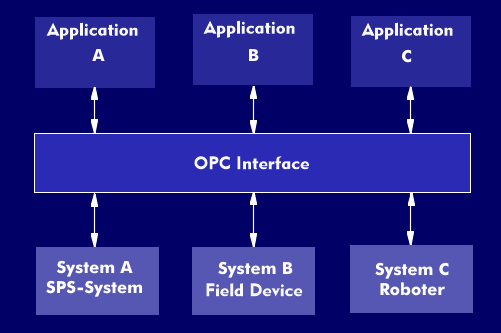OLE for process control (OPC)
OLE for Process Control( OPC) - Object Linking and Embedding (OLE) - is a communication interface between Windows applications and automation devices. The OPC Foundation has elaborated and standardized this interface.
In conventional automation systems, each individual application communicates with the corresponding system via a special driver that implements the device-specific protocol. The resulting development, programming, administration and maintenance effort is therefore relatively high, since a separate driver must be developed for each application and for each device.
The OPC concept, on the other hand, defines its own standard interface for communication between any applications and devices. It works with OPC clients for the applications and OPC servers for the automation systems in which the device-specific protocol is implemented. The OPC servers communicate with the OPC clients via the OPC interface, usually using Microsoft Distributed Component Object Model( DCOM) technology. This communication is transparent and allows to identify from which application the data comes. During the communication the OPC client accesses the OPC server and the data provided there. The OPC server obtains its process data from the controllers of the fielddevices via the fieldbus.
The concept also supports the parallel operation of different OPC servers and OPC clients on one server.
There are different OPC interfaces for data access, for events and alarms, for batch applications, access to older data and for security aspects.

